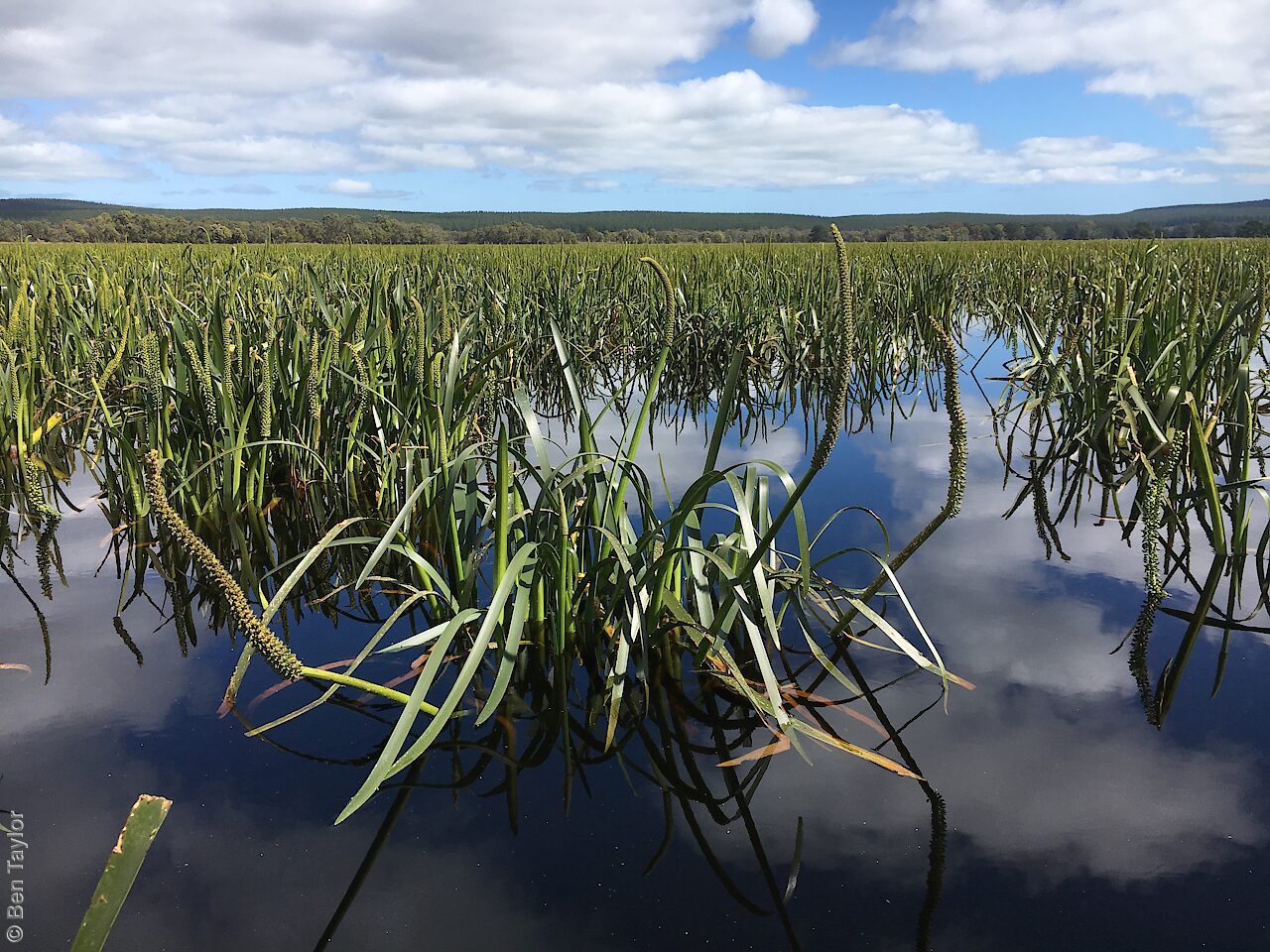
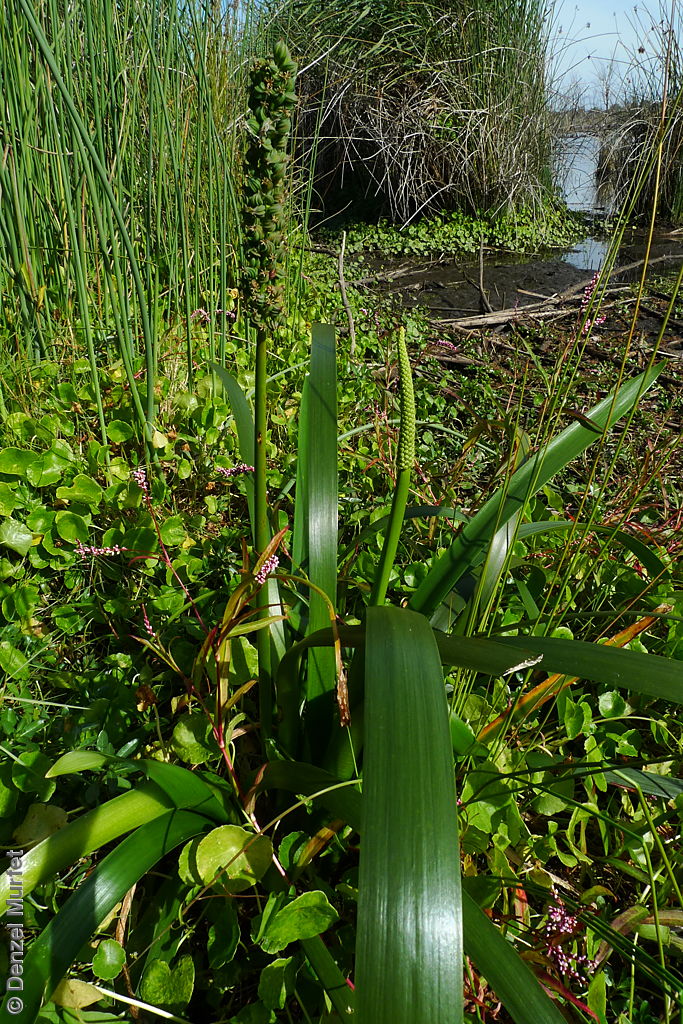
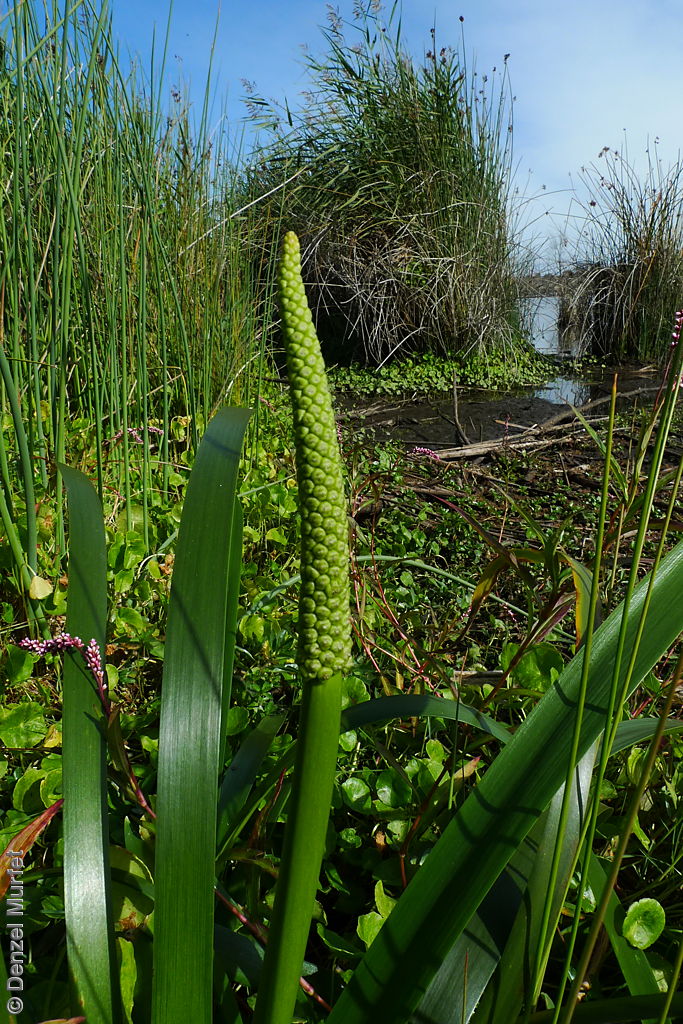
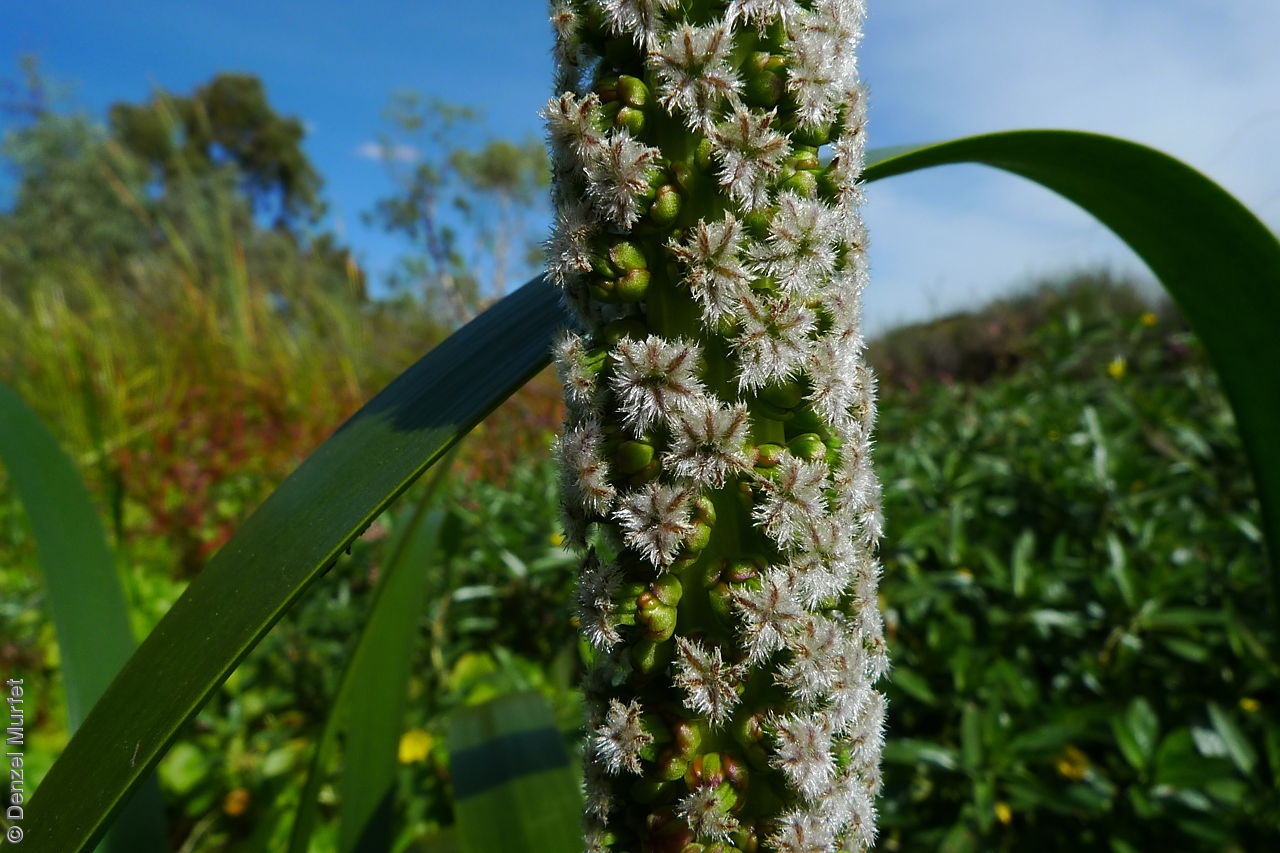
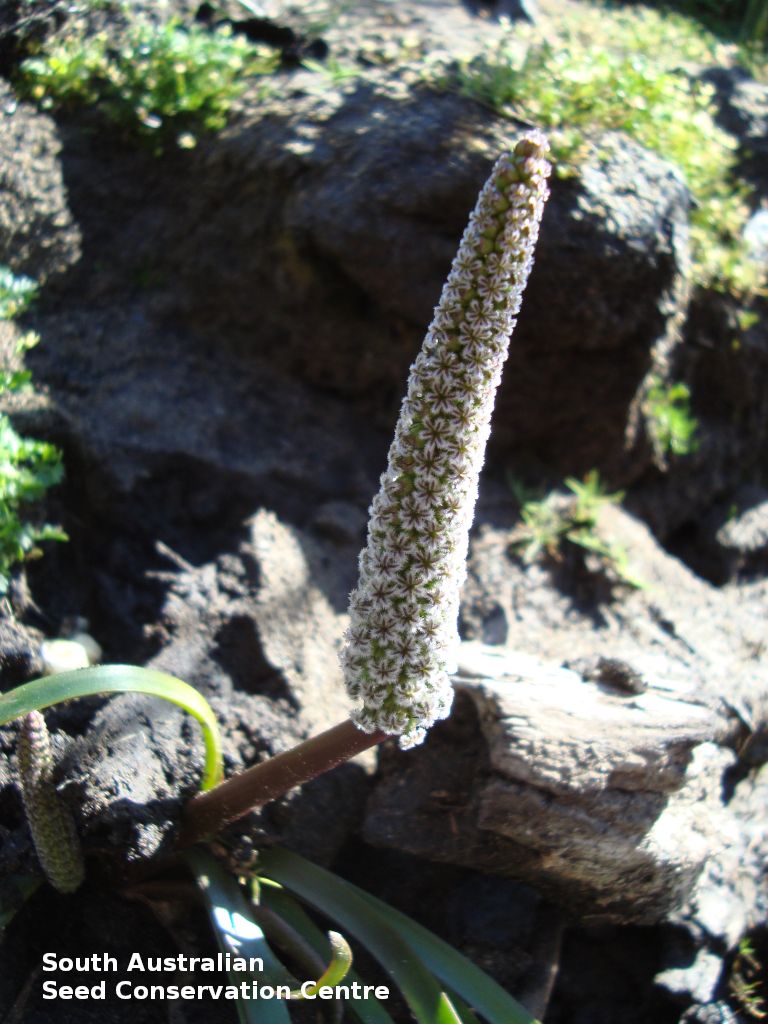
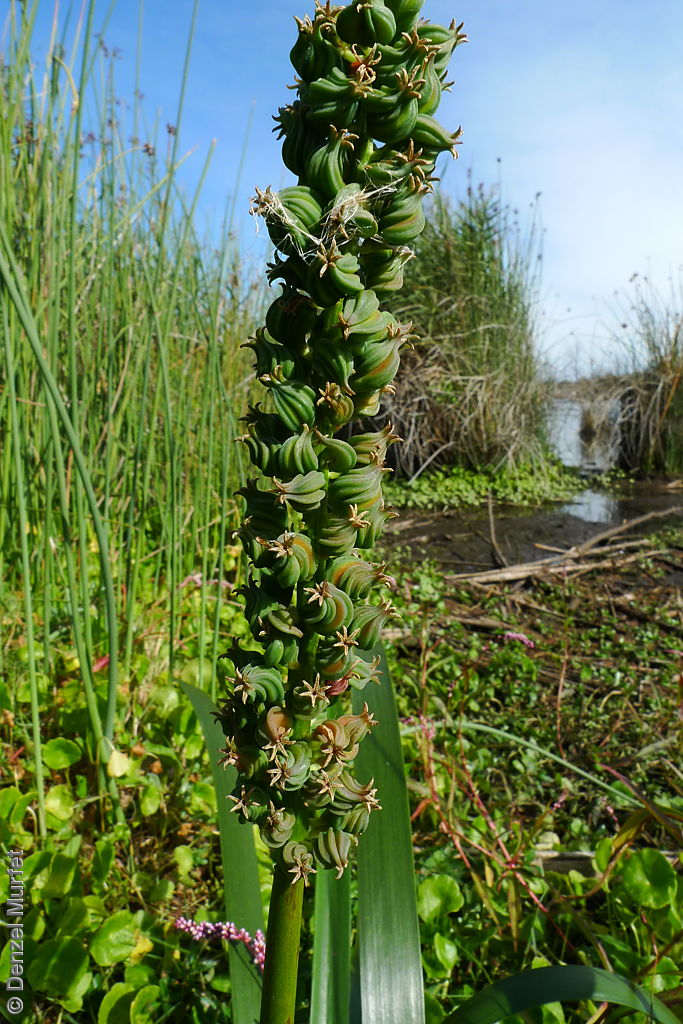
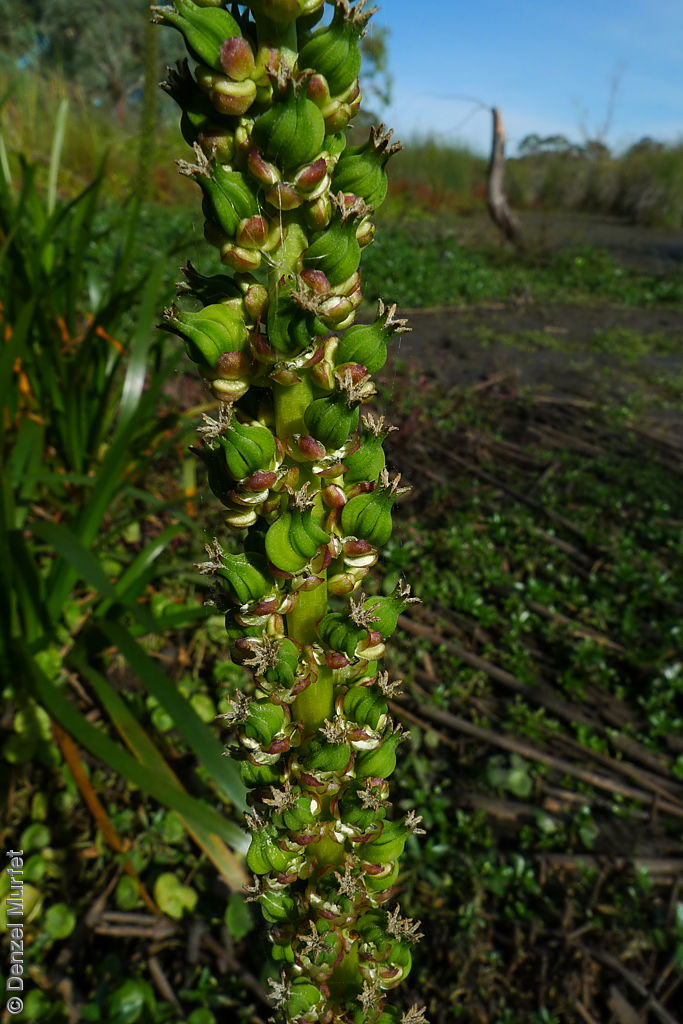
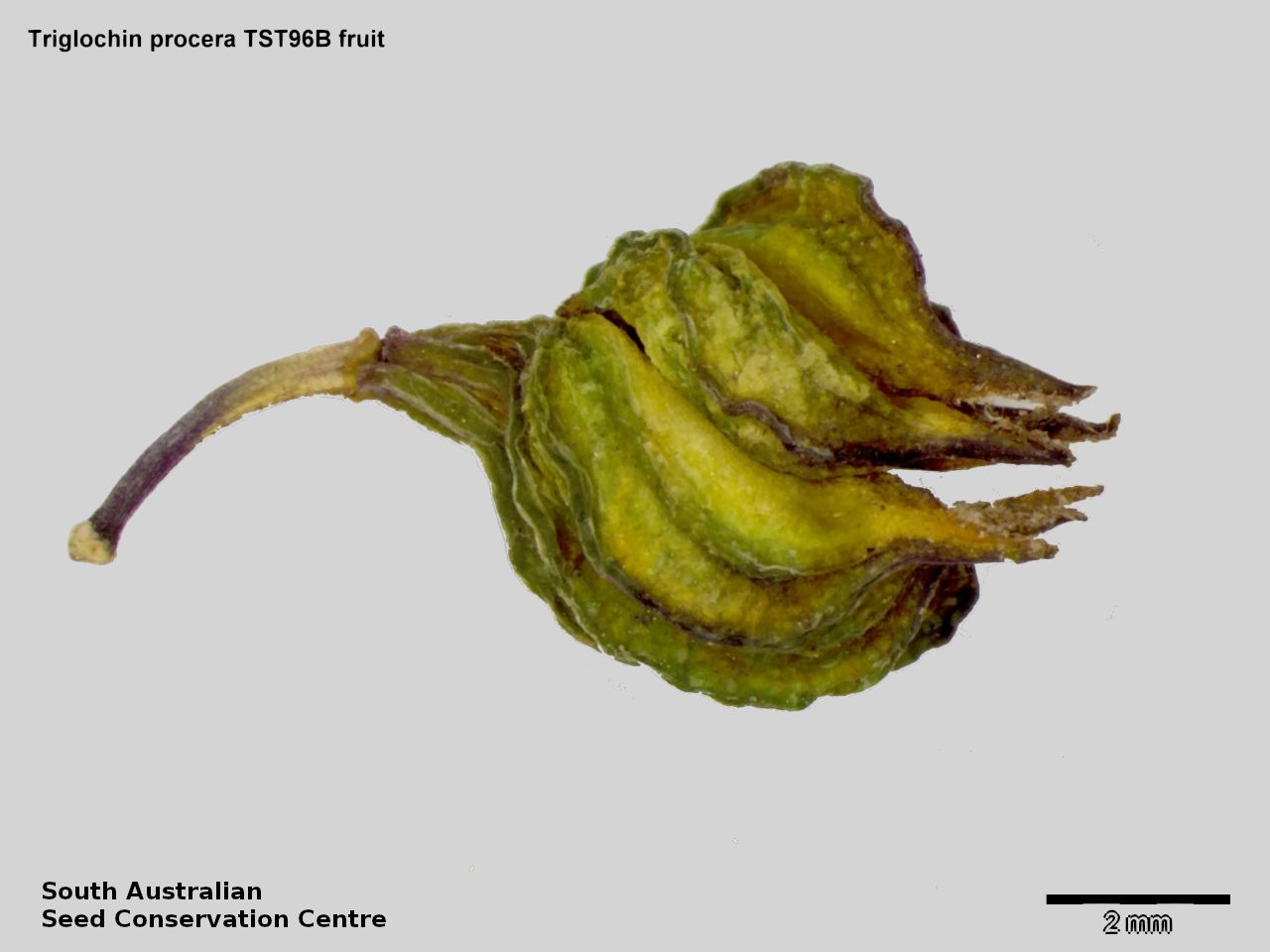
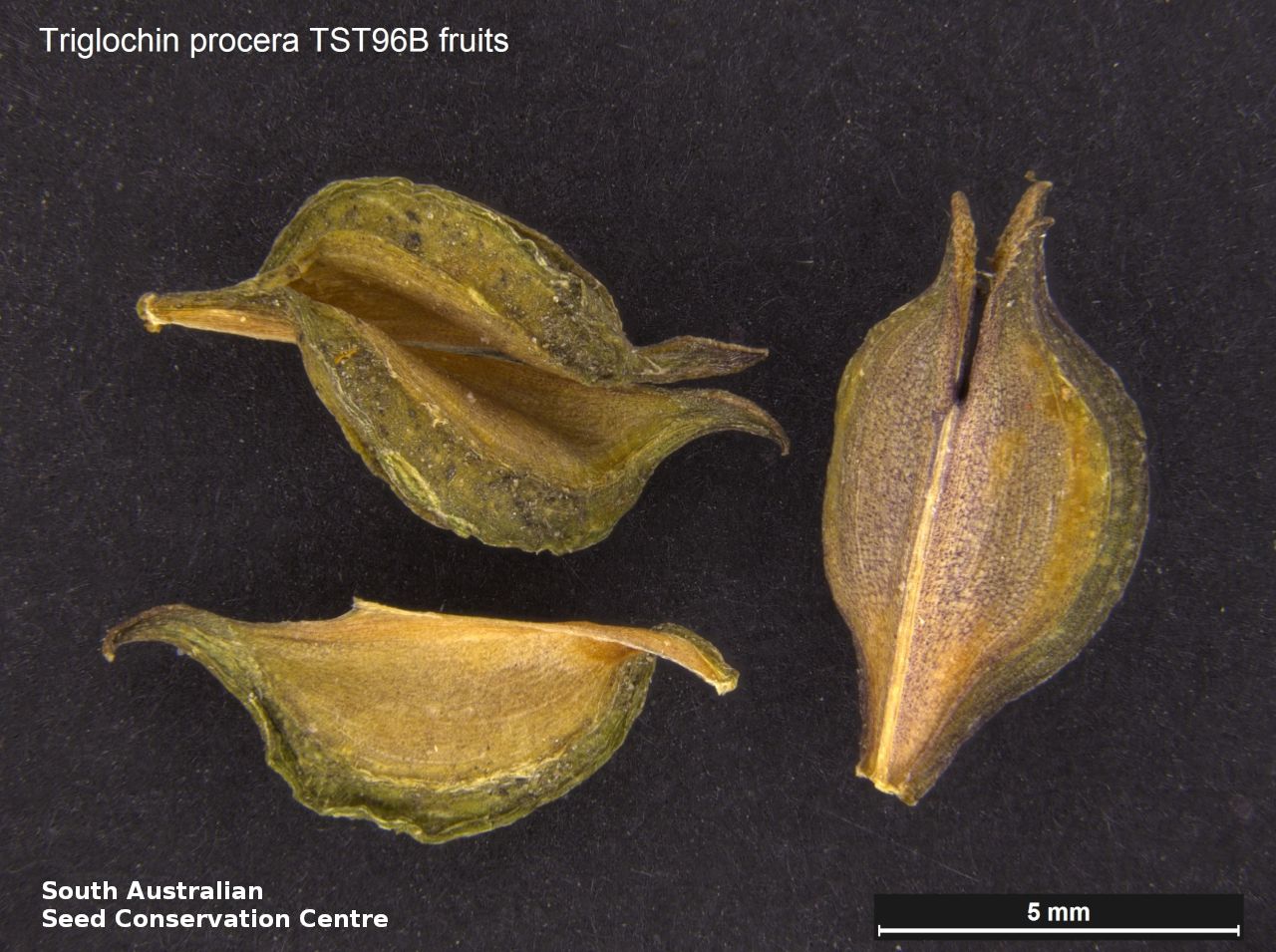
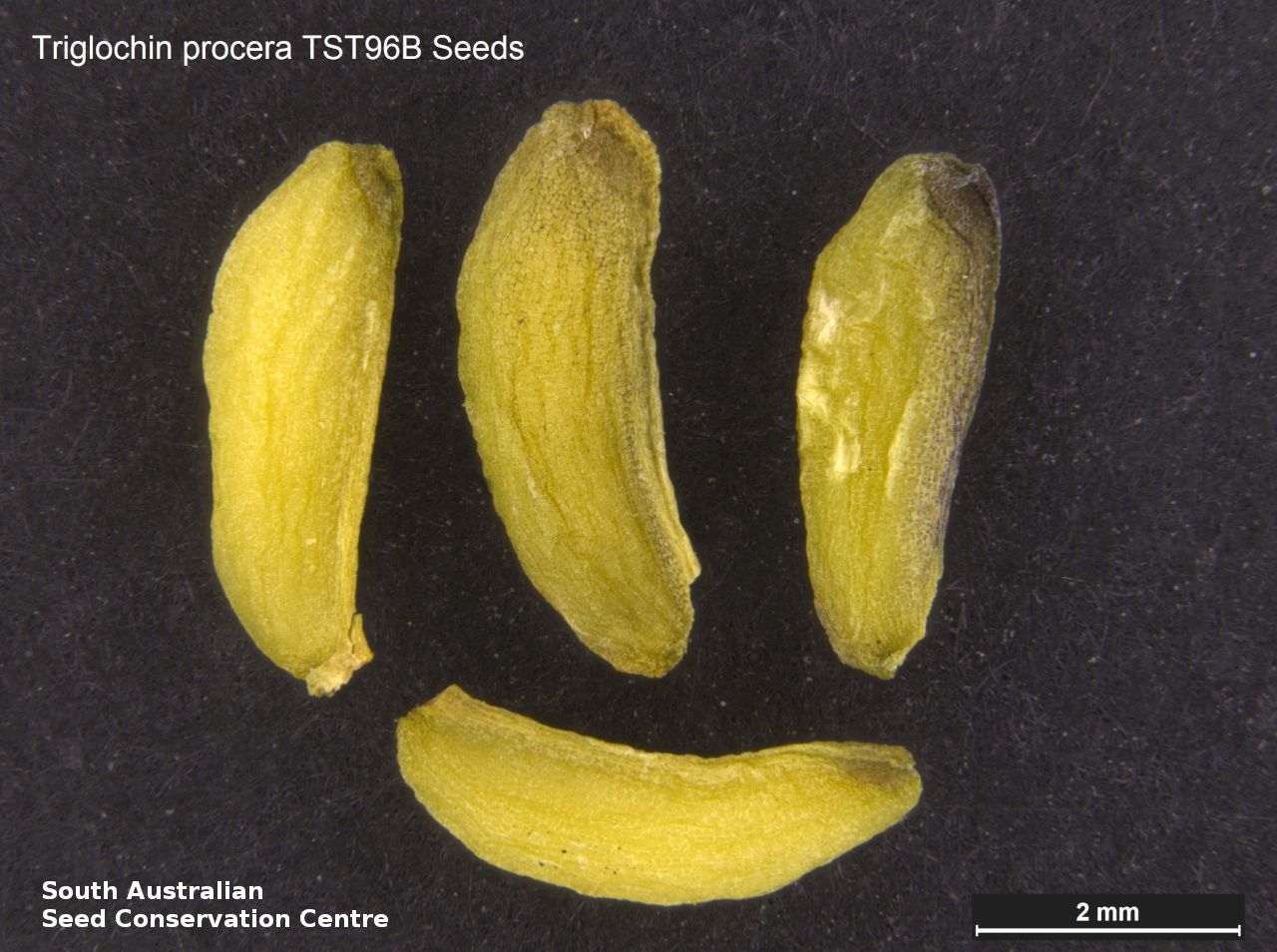
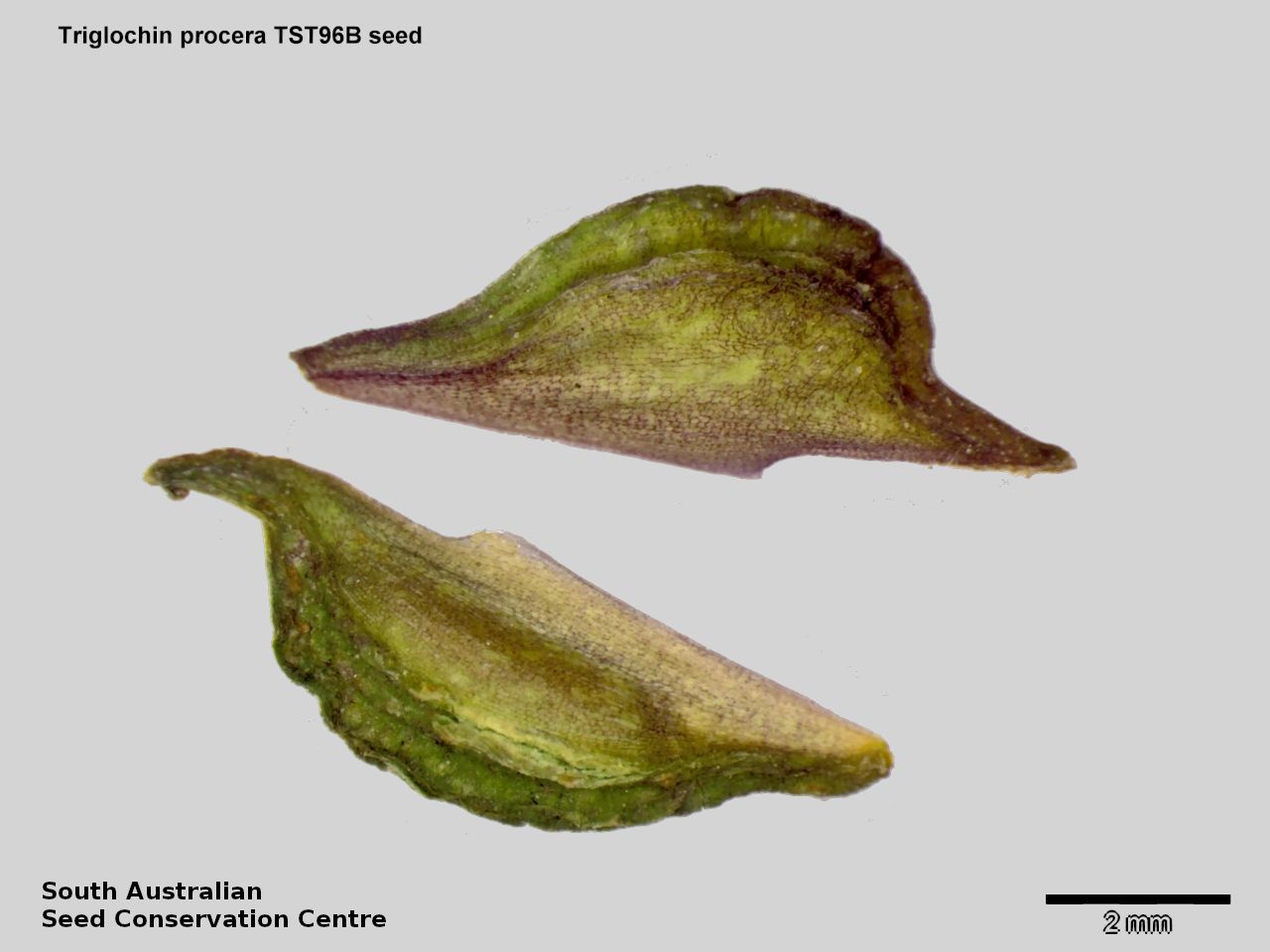

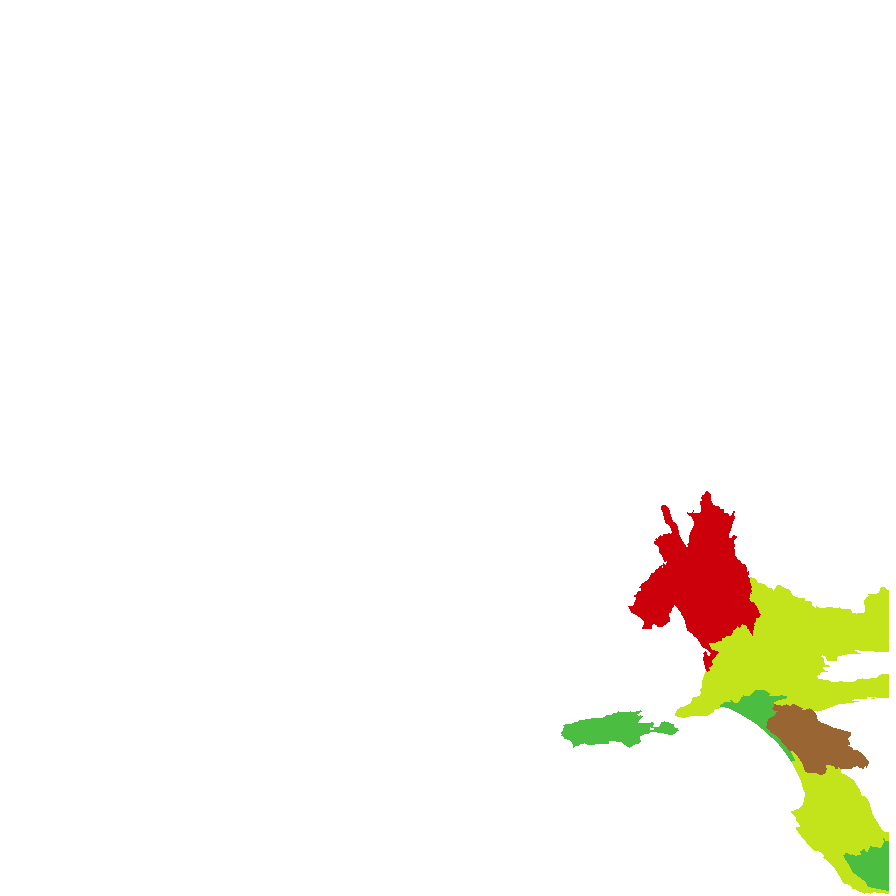
Botanical art
Prior names
Triglochin procera
Triglochin procerum var. procerum, orth.var., partly
Triglochin procerum, orth.var., partly
Common names
Large Water-ribbons
Water-ribbons
Etymology
Cycnogeton (formally Triglochin) from the Greek 'cycnos' meaning swan and 'geiton' meaning neighbour; referring to its closeness, taxonomically to Triglochin. Procerum from the Latin 'procerus' meaning high, tall or long; referring to its larger habit compared to other species.
Distribution and status
Found on Kangaroo Island, southern Mount Lofty Ranges, Murrayland and the South-east in South Australia, growing in still to slow-flowing fresh water to 2 m deep, mostly in permanent swamps, lagoons and streams, but can withstands extensive periods of dryness. Also found in Queensland, New South Wales, Victoria and Tasmania. Native. Common in South Australia. Uncommon in Queensland. Common in the other states.
Herbarium regions: Murray, Southern Lofty, South Eastern, Green Adelaide
NRM regions: Adelaide and Mount Lofty Ranges, South Australian Murray-Darling Basin, South East
AVH map: SA distribution map (external link)
Plant description
Robust, emergent, perennial, aquatic herb with thick, woody, fibre-covered rhizome to 30 mm long and roots ending in elongated tubers to 145 mm long and 13 mm diamter. Leaves flat and strap-like, floating to erect, dorsiventral, glossy above, to 350 cm long and 41 mm wide, thick and spongy basally. Inflorescence large erect to reclining spike to 145 cm long and 23 mm diameter with fruiting part at the end. Flowers in spring and summer. Fruits are yellow-green globular to ellipsoid fruit to 14 mm long and 11 mm wide with 52–320 per spike, each with a pedicel to 5 mm long. Seed segments (carpels) attached along most of its length and are straight to twisted around each other. 3-6 seeds per fruit. Seeds are yellow-green segmented seed (carpel) to 9 mm long and 3 mm wide, with broad-convex dorsal ridge and two broad lateral ridges and slightly pointed apex. Seed embryo type is linear.
Seed collection and propagation
Collect seeds between September and March. Collect mature fruits that are turning yellowish-green and seed segments come apart easily, either individually or by breaking off the spike. Place the fruit in a tray and leave to dry for 1 to 2 weeks. No further cleaning is required collection consist of mainly individual seeds. If collected with other material, then rub the dried fruit with a rubber bung to dislodge the seeds. Use a sieve to separate any unwanted material. Store the seeds with a desiccant such as dried silica beads or dry rice, in an air tight container in a cool and dry place. From one collection, the seed viability was average, at 80%.
| Location | No. of seeds (weight grams) | Number of plants | Date collected | Collection number Collection location | Date stored | % Viability | Storage temperature |
|---|---|---|---|---|---|---|---|
| BGA MSB | 7,400 (43 g) 7,400 (43 g) | 40 | 15-Nov-2006 | TST96B Kangaroo Island | 1-Aug-2007 | 80% | -18°C |
Number of plants: This is the number of plants from which the seeds were collected.
Collection location: The Herbarium of South Australia's region name.
% Viability: Percentage of filled healthy seeds determined by a cut test or x-ray.